Iván Cantador
Rating and aspect-based opinion graph embeddings for explainable recommendations
Jul 07, 2021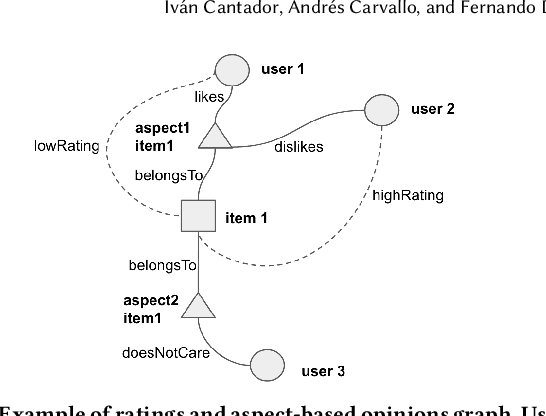
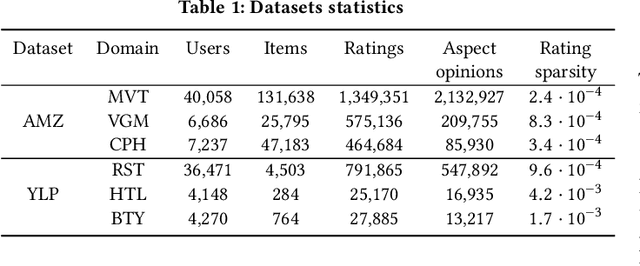

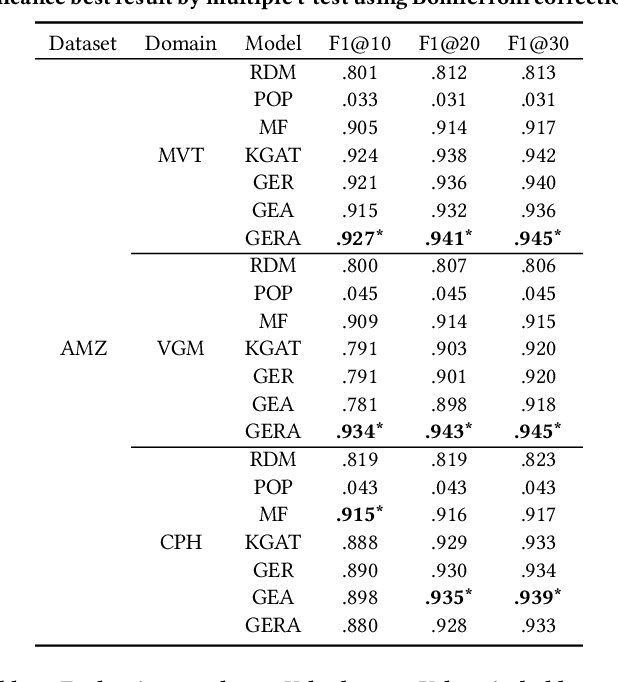
Abstract:The success of neural network embeddings has entailed a renewed interest in using knowledge graphs for a wide variety of machine learning and information retrieval tasks. In particular, recent recommendation methods based on graph embeddings have shown state-of-the-art performance. In general, these methods encode latent rating patterns and content features. Differently from previous work, in this paper, we propose to exploit embeddings extracted from graphs that combine information from ratings and aspect-based opinions expressed in textual reviews. We then adapt and evaluate state-of-the-art graph embedding techniques over graphs generated from Amazon and Yelp reviews on six domains, outperforming baseline recommenders. Additionally, our method has the advantage of providing explanations that involve the coverage of aspect-based opinions given by users about recommended items.
Graphing else matters: exploiting aspect opinions and ratings in explainable graph-based recommendations
Jul 07, 2021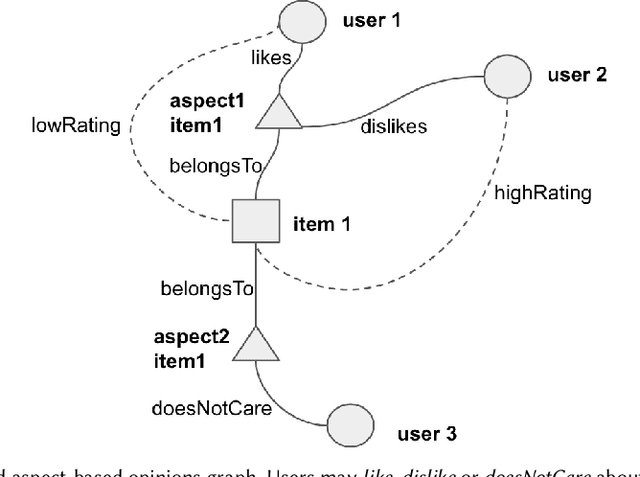
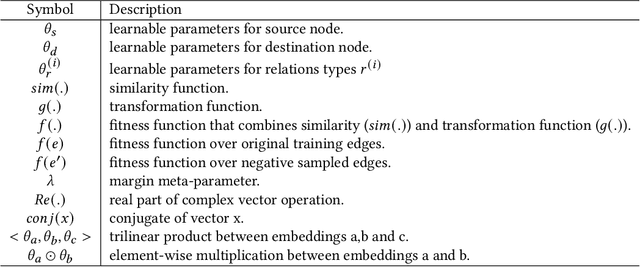
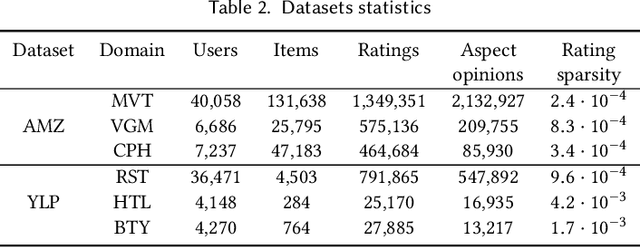
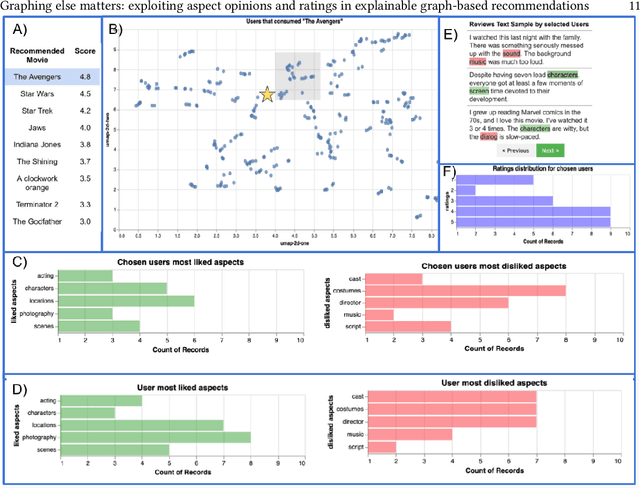
Abstract:The success of neural network embeddings has entailed a renewed interest in using knowledge graphs for a wide variety of machine learning and information retrieval tasks. In particular, current recommendation methods based on graph embeddings have shown state-of-the-art performance. These methods commonly encode latent rating patterns and content features. Different from previous work, in this paper, we propose to exploit embeddings extracted from graphs that combine information from ratings and aspect-based opinions expressed in textual reviews. We then adapt and evaluate state-of-the-art graph embedding techniques over graphs generated from Amazon and Yelp reviews on six domains, outperforming baseline recommenders. Our approach has the advantage of providing explanations which leverage aspect-based opinions given by users about recommended items. Furthermore, we also provide examples of the applicability of recommendations utilizing aspect opinions as explanations in a visualization dashboard, which allows obtaining information about the most and least liked aspects of similar users obtained from the embeddings of an input graph.
Analysing the Effect of Recommendation Algorithms on the Amplification of Misinformation
Mar 26, 2021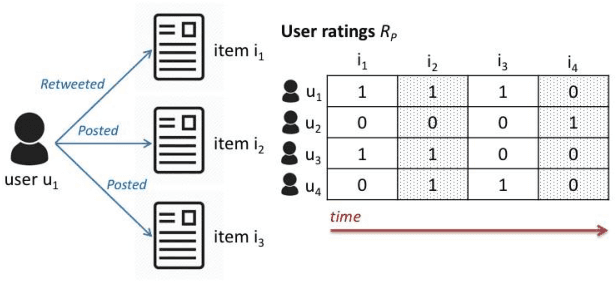
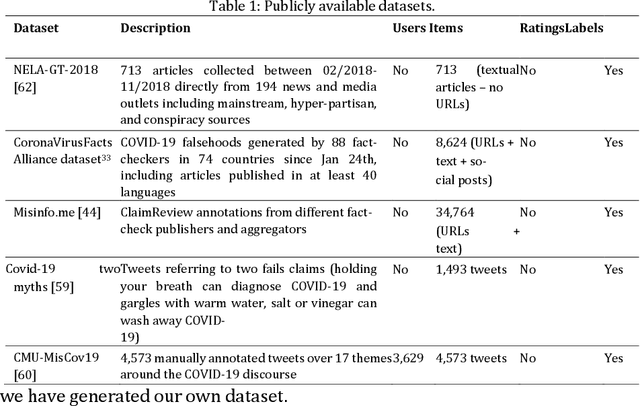
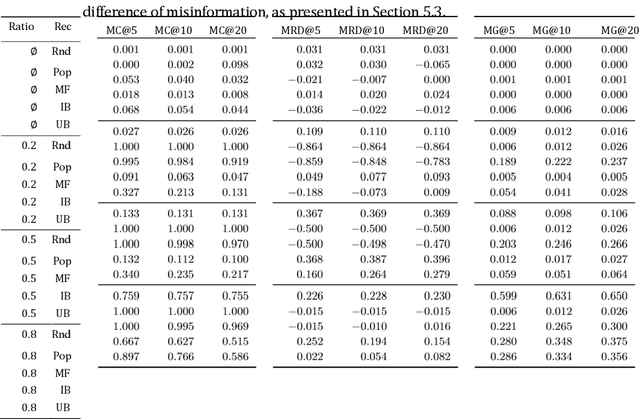
Abstract:Recommendation algorithms have been pointed out as one of the major culprits of misinformation spreading in the digital sphere. However, it is still unclear how these algorithms really propagate misinformation, e.g., it has not been shown which particular recommendation approaches are more prone to suggest misinforming items, or which internal parameters of the algorithms could be influencing more on their misinformation propagation capacity. Motivated by this fact, in this paper we present an analysis of the effect of some of the most popular recommendation algorithms on the spread of misinformation in Twitter. A set of guidelines on how to adapt these algorithms is provided based on such analysis and a comprehensive review of the research literature. A dataset is also generated and released to the scientific community to stimulate discussions on the future design and development of recommendation algorithms to counter misinformation. The dataset includes editorially labelled news items and claims regarding their misinformation nature.
 Add to Chrome
Add to Chrome Add to Firefox
Add to Firefox Add to Edge
Add to Edge